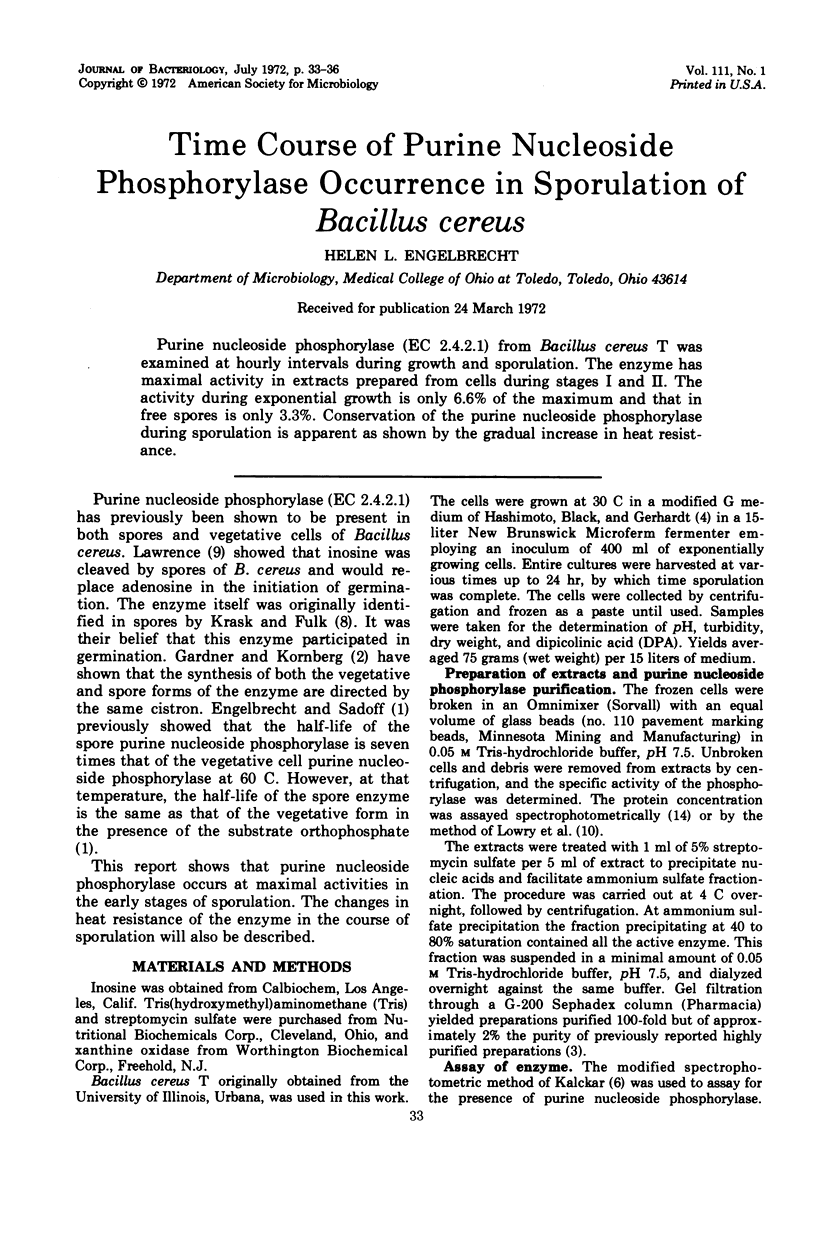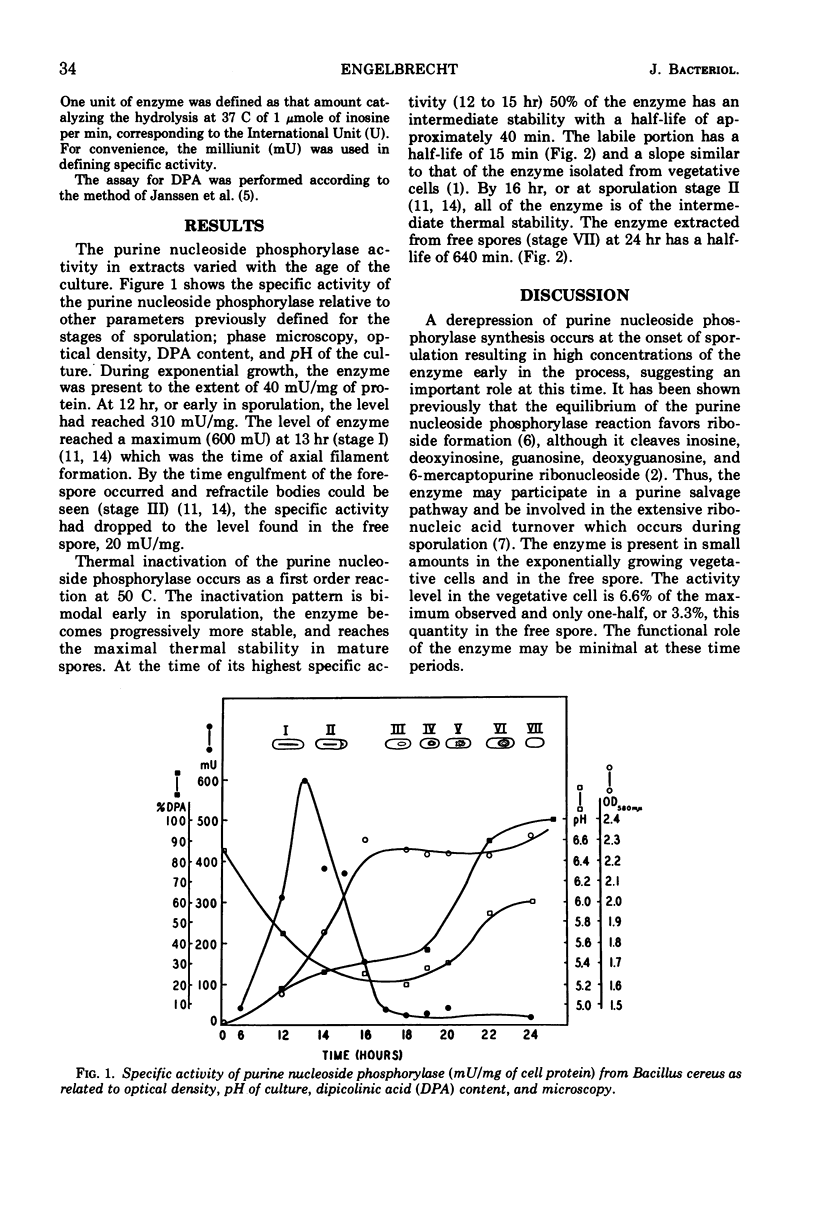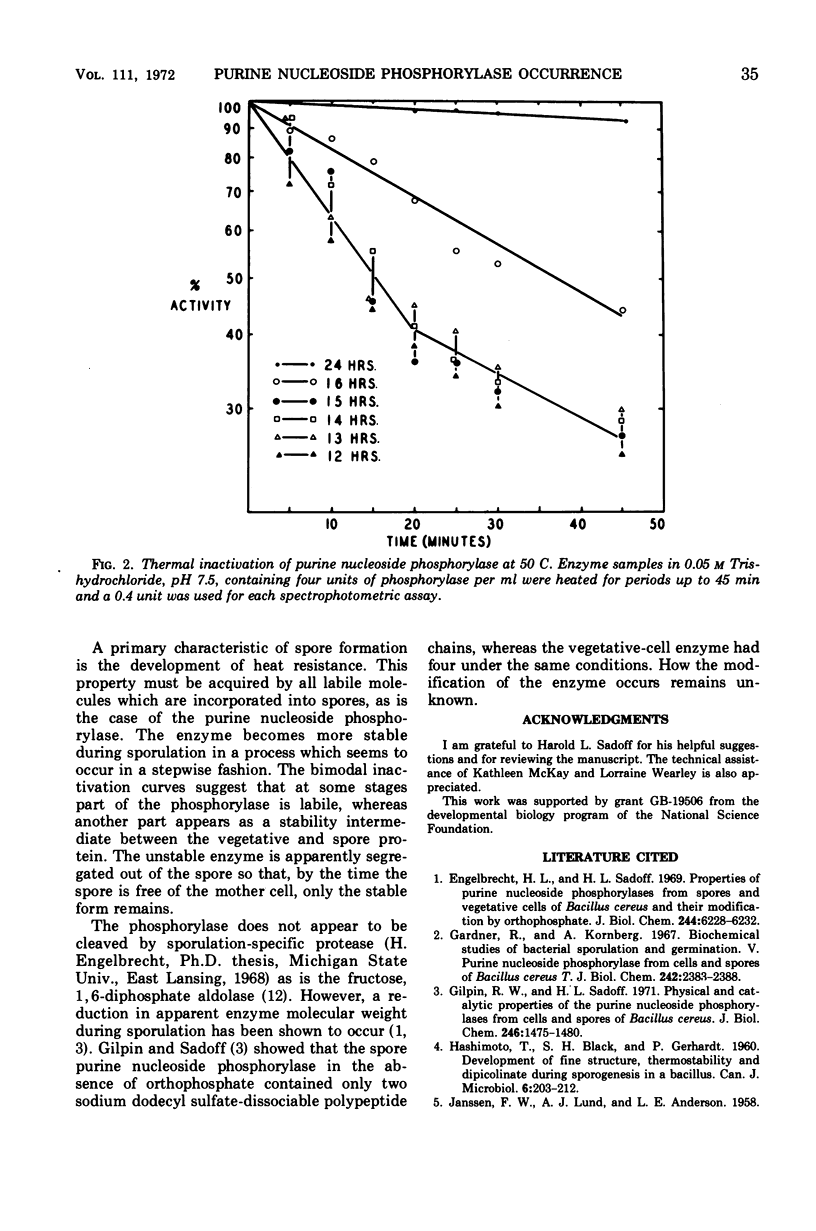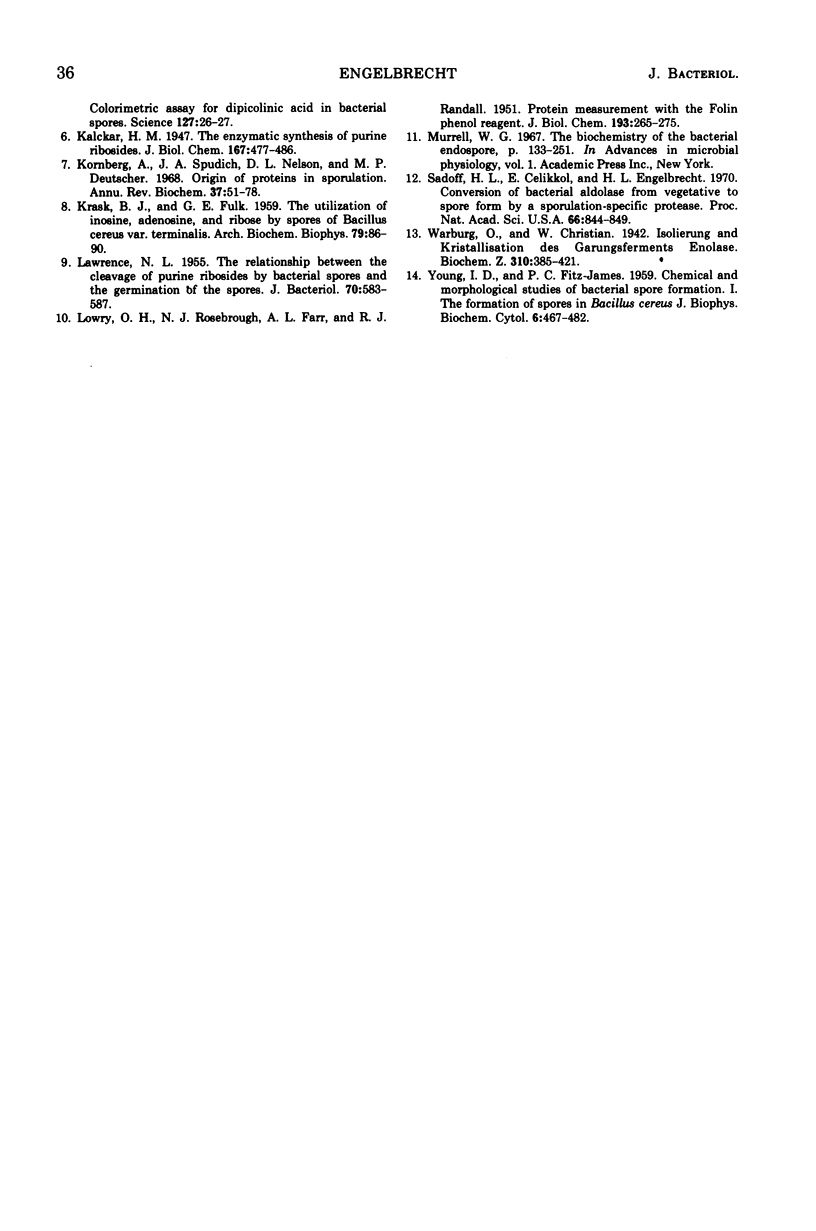Abstract
Purine nucleoside phosphorylase (EC 2.4.2.1) from Bacillus cereus T was examined at hourly intervals during growth and sporulation. The enzyme has maximal activity in extracts prepared from cells during stages I and II. The activity during exponential growth is only 6.6% of the maximum and that in free spores is only 3.3%. Conservation of the purine nucleoside phosphorylase during sporulation is apparent as shown by the gradual increase in heat resistance.
Full text
PDF



Selected References
These references are in PubMed. This may not be the complete list of references from this article.
- Engelbrecht H. L., Sadoff H. L. Properties of purine nucleoside phosphorylases from spores and vegetative cells of Bacillus cereus and their modification by orthophosphate. J Biol Chem. 1969 Nov 25;244(22):6228–6232. [PubMed] [Google Scholar]
- Gardner R., Kornberg A. Biochemical studies of bacterial sporulation and germination. V. Purine nucleoside phosphorylase of vegetative cells and spores of Bacillus cereus. J Biol Chem. 1967 May 25;242(10):2383–2388. [PubMed] [Google Scholar]
- Gilpin R. W., Sadoff H. L. Physical and catalytic properties of the purine nucleoside phosphorylases from cells and spores of Bacillus cereus T. J Biol Chem. 1971 Mar 10;246(5):1475–1480. [PubMed] [Google Scholar]
- HASHIMOTO T., BLACK S. H., GERHARDT P. Development of fine structure, thermostability, and dipicolinate during sporogenesis in a bacillus. Can J Microbiol. 1960 Apr;6:203–212. doi: 10.1139/m60-022. [DOI] [PubMed] [Google Scholar]
- JANSSEN F. W., LUND A. J., ANDERSON L. E. Colorimetric assay for dipicolinic acid in bacterial spores. Science. 1958 Jan 3;127(3288):26–27. doi: 10.1126/science.127.3288.26. [DOI] [PubMed] [Google Scholar]
- Kornberg A., Spudich J. A., Nelson D. L., Deutscher M. P. Origin of proteins in sporulation. Annu Rev Biochem. 1968;37:51–78. doi: 10.1146/annurev.bi.37.070168.000411. [DOI] [PubMed] [Google Scholar]
- LAWRENCE N. L. The relationship between the cleavage of purine ribosides by bacterial spores and the germination of the spores. J Bacteriol. 1955 Nov;70(5):583–587. doi: 10.1128/jb.70.5.583-587.1955. [DOI] [PMC free article] [PubMed] [Google Scholar]
- LOWRY O. H., ROSEBROUGH N. J., FARR A. L., RANDALL R. J. Protein measurement with the Folin phenol reagent. J Biol Chem. 1951 Nov;193(1):265–275. [PubMed] [Google Scholar]
- Sadoff H. L., Celikkol E., Engelbrecht H. L. Conversion of bacterial aldolase from vegetative to spore form by a sporulation-specific protease. Proc Natl Acad Sci U S A. 1970 Jul;66(3):844–849. doi: 10.1073/pnas.66.3.844. [DOI] [PMC free article] [PubMed] [Google Scholar]


